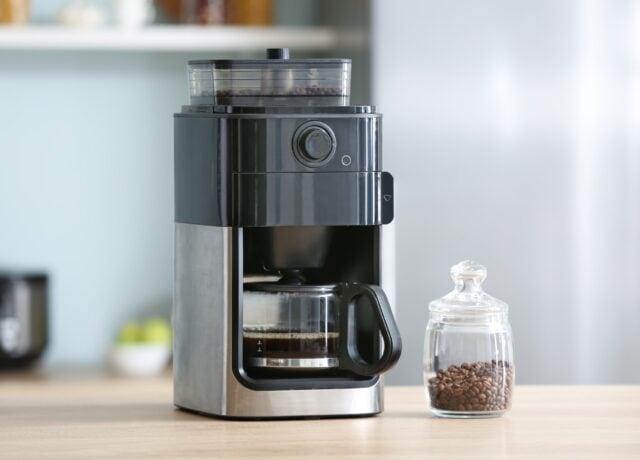It’s morning and time to make yourself a fresh, delicious cup of coffee. You lift it to your lips and realize it is covered in oil. Does that mean your coffee beans have gone bad?
The good news is that having an oil film on top of your coffee is pretty normal. In this article, we’ll break down the reason that oil gathers on top of your morning coffee cup and what, if anything, you should do about it.
What Causes Oil To Gather On Top Of Your Coffee?

The technical term for the oil that gathers on the surface of your coffee has an unfortunate name — “coffee scum”. Despite the gross-sounding moniker, it is nothing dirty or disgusting. The appearance of coffee scum is simply the natural coffee oils from the fresh coffee beans rising to the top of the cup.
These oils are a combination of caffeine and other chemical compounds, including antioxidants, and contain roughly 71 percent unsaturated fat.
Why Does Oil Coat The Top Of Your Coffee?
Several factors can cause oil to rise and create coffee scum, the film on top of the liquid. These include the method of brewing, water temperature (and sometimes water hardness), type of roast, coffee bean quality, and filter type.
Brewing Method
The way you brew your coffee can affect how much coffee scum you see. Drip brewing, for example, is less likely to produce a film, since it uses a filter.
Other methods like a French press or Turkish coffee are more likely to produce filmy, oily coffee since many of these don’t use filters and are brewed at very high temperatures.
Water Temperature
Suppose you use extremely hot water to brew your coffee (for example, boiling water in a kettle for a pour-over method). In that case, you may notice higher levels of coffee scum because the higher temperature causes the molecules in the coffee to bond more effectively. However, the oil is insoluble (and only partially hydrophilic), so it doesn’t “mix” with the other molecules. Instead, it rises to the top.
Water Hardness
If you live in a place with hard water, you might notice more film on top of your coffee.
That’s because hard water has higher mineral content than soft water. Minerals like calcium bond with the fatty acids exuded by the coffee beans, letting the oil rise to the top.
To be clear, it doesn’t cause more coffee scum to develop — it just makes it a lot more noticeable.
Roast Type
Different types of roasted coffee beans have varying levels of oil in them. Flame-roasted coffee beans, for example, tend to be higher in unsaturated fat, so you might notice more coffee scum with brews from these beans.
Dark roasts and light roasts both contain oils. However, dark roasts bring these oils to the surface of the bean, which means you might see more film.
Coffee Bean Quality
Higher-grade coffee beans tend to be less oily because of differences in production. It doesn’t necessarily mean that coffee scum is an indicator of a bad cup of coffee!
High-quality coffee beans are often slowly roasted, which causes them to exude lower amounts of oil. The result? Less likelihood of film on top of your morning cup.
Filter Type
Using a brewing method with a filter is best to avoid that sheen of oil on top of your coffee. However, not every coffee filter is made the same. If you use a filter and still have trouble with coffee scum, you might want to switch the filter you use.
The most effective type of filter is usually one that contains activated charcoal. This bonds to organic impurities in your coffee and keeps them from going into your cup. That includes fats like the ones in coffee beans, making them highly effective at reducing the likelihood of coffee scum.
This is why filter-free methods of coffee brewing are more likely to produce a layer of oil on top of your cup.
Conclusion
So, is a film on morning coffee a bad thing? Not necessarily. Some people even argue that it is a good thing since the oils from the ground coffee beans contain a lot of their flavor.
However, if you don’t enjoy the feel or taste of the layer of oil, there are ways to avoid it. Brewing at lower temperatures or with a better filter can improve the quality of your coffee, as can switching to a higher quality blend or roast.
Happy Caffeinating!







